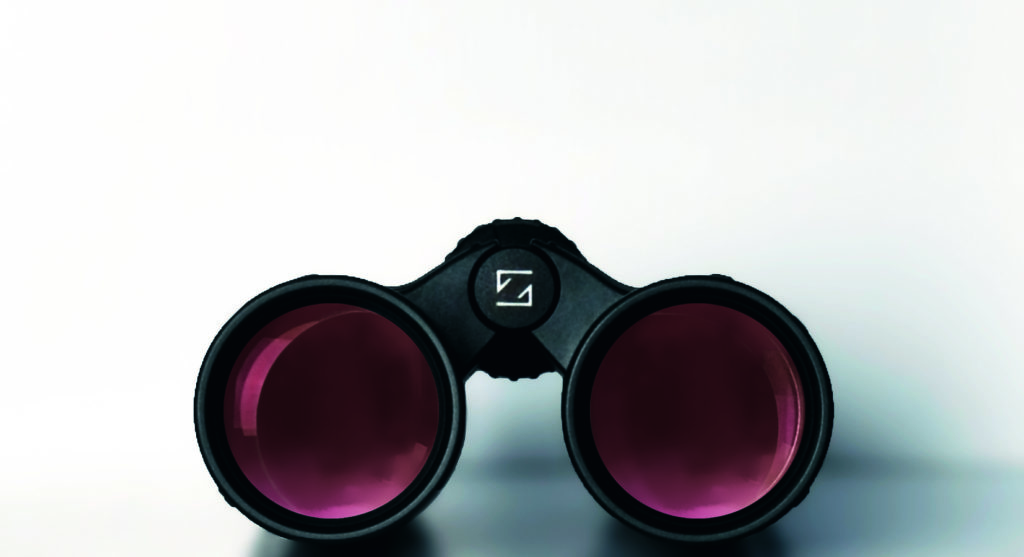Part 1: Magnification (M)
The first digit in the type designation indicates the magnification factor. With 10 x 56 binoculars, the observed object appears 10x larger than with the naked eye. To put it into simpler terms, the distance to the object shrinks by the magnification factor, i.e. a deer 400 m away looks like it is only 40 m away when you look through 10x binoculars.

For anyone interested in precise mathematical descriptions: the magnification is defined as the ratio between the tangent of the angle at which the object appears with binoculars to the tangent of the angle at which the object appears without binoculars. In other words:

Detail recognition and hand tremor
Typical binoculars for free-hand observation feature 7 to 10x magnification. Higher magnifications deliver a larger image and, in theory, better detail recognition but this benefit quickly becomes the opposite due to the hand tremor noticeable increasing. This is something that everyone should test themselves. When in doubt, lower magnification is more enjoyable and the better choice in the long run.
Effect on the field of view, brightness and depth of field
Apart from a steadier image, lower magnification (e.g. 7 x 42 compared to 10 x 42) also offers additional benefits:
- The field of view is larger and you have a better overview of the surroundings.
- The exit pupil is larger, resulting in a brighter image at dawn.
- The depth of field, i.e. the area in the foreground and background that is still perceived as sharply focused, is also larger. You do not have to refocus for minor range changes constantly
Part 2: Lens diameter
The second digit in the product designation indicates the lens diameter in millimeters. 8 x 56 binoculars, for example, have an aperture of 56 mm. The higher this value the more light enters the binoculars. On the flip side, a larger lens diameter also means more weight. However, in recent years, the use of state-of-the-art housing materials and thinner lens elements has resulted in a noticeable reduction in weight.

Unfortunately, on lower-quality binoculars the effective aperture, i.e. the effective entrance pupil, is occasionally much smaller than given despite the large lens diameter. For example, this is due to the small dimensions of the prisms, lens elements, or other components that obstruct the flow of light inside the binoculars. For example, if only 3 mm of the incidental light is cut all around the outer edge on an 8 x 56 model, the effective entrance pupil is 50 mm only. These “8 x 50” binoculars, therefore, have about a 20% smaller light transmission than expected and 20% less light reaches the eye.
This is not easy for amateurs to test – and it is also not necessary for ZEISS products. The given lens diameter is fully utilized to ensure maximum light transmission and brightest images.